|
I'm very pleased to announce that some recordings from the Resounding project will be part of a new exhibition celebrating the life and work of JA Baker in Spring 2024. More information can be found on the Chelmsford City Life website. The exhibition will focus on his personal life and feature a lot of Baker's artefacts, that are usually in the custody of Essex University Archive. You can find more information on the City Life website.
0 Comments
I'm very pleased to announce that recordings from the Resounding project are released today as an album on Essex based micro label Courier. 6 x 10 minute edits will be available to buy on a super limited edition (10) cassette, which is housed in a recycled card stock cover and comes replete with an individual watercolour by painter Jane Lewis. The digital version of the album features 10 minute edits of all 13 recordings. You get the digital version with the cassette.
*Reviews* 'These tranquil soundscapes make for such a peaceful and meditative listening experience, and a beautiful album of non-musical sound.' - Audio Crackle I recently found a website dedicated to the life and times of JA Baker run by David Simmonds. It has a thorough timeline of Baker's life, information about his books and the archive at the Essex University, and a gallery of photos from the Essex landscape where Baker walked and rode his bicycle. Take a look over here.
I downloaded the (free) Merlin Bird App and have been using it a lot over the past month whilst making recordings out in the field. It's simple to use and works in real time so it has helped me to learn how to identify birds as I can hear them, which has vastly improved my knowledge of birds and their calls and songs. It works, not by analysing the sound, but by picking up visual patterns when the sound is represented as a spectrograph. This visual element helps the user to see the sounds of birds as well, which certainly helps me as some of my higher register of hearing is really underperforming. I have also used the app on older recordings to help identify birds, but as the information gathered by the app is sent to a central database, I make sure to delete these files before that happens. The developers at Cornell University Labs are using the power of citizen science to build a maps about birds numbers and migrations, so by using the app you are helping with this huge conservation effort.
I was pleased to be invited by Phil Cohen at Living Maps to give an interview on a live stream as part of their Front Lines, Back Yards series of events. Also interviewed was researcher and interpretive planner Paul Tourle. More information can be found here.
There are so many societal and political issues that have been brought in to sharp focus during the Covid crisis all around the world and its becoming, for me at least, somewhat overwhelming. Today was possibly the last time I’ll be out making field recordings for this project and it was the first time in several months that I have been able to relax, if only just for an hour. This was achieved by a few defining factors before I arrived, such as a decent nights sleep, my general mood upon waking and the state of the journey here. Just everyday things, but really key to the state of my mental health on a daily basis. Needless to say my inner weather was rather sunny before I arrived and the walk out to the river from Fish Lane in Goldhanger, and the 2 mile long trek along the sea wall helped further. The sight of some scruffy old sheep grazing on the path and the flat open expanse of Joyces Marsh were the cherry on the top of the exploratory cake, and by the time I reached the point that Baker had marked on his map I was ready to take my explorations inward.
The previous week was the exact opposite and I was in a foul mood by the time I reached Stone Point. My head was like a tumbledrier full of negative and dark abrasive garments at 1600rpm and all I could do was think about my own problems and those of the world in general. Writing of any kind was a chore and what I did manage to was just an extension of my depression rather than any useful reflection or analysis for this project. It’s a continuous battle between controlling forces and freedom. Or possibly perceived freedom. Like the sheep on the sea wall, free to roam and eat what they like, but hemmed in by the salt marsh on one side, borrow dyke on the other and fences at either end. Almost like an island which is mostly not full with sheep of different colours. There is a way out, if you are physically able to use a style. I wonder too if Baker used his time in the Essex countryside as an escape from the political and social turmoil of his time, especially in light of his mental health issues, instead preferring to lose himself in the pursuit of something more meaningful and wholesome to him, and turning negativity in to a creative positivity. The problems of his time bear a striking resemblance to what has been happening in the past few weeks: oppression of people in black communities, racism, police brutality, riots and unrest, corrupt politicians and bias media. It's probably alway been the same. Together with the constant stream of information about Brexit, and then the Covid-19 pandemic, and a myriad of other injustices, disasters and global problems, it’s becoming a bit too heavy to bear. I am aware that I’m in a privileged position as I’m able to afford a car, can drive to another location and walk about with a fair amount of kit on my back, unhindered, in relative safety and mostly without suspicion (occasionally I do get stopped or questioned about my motive by members of the public, or the authorities!). It was not the case for Christian Cooper recently in Central Park, New York, whose encounter went viral recently. But now, especially as momentum is growing, is when we need to stay strong, dig a bit deeper if we can, and fight. So I sat on the sea wall amongst the long grass and plants, and listened, watched, waited. Slowing down, if only for an hour. Positive identification on the following birds: Cuckoo Egret Blue tit Mallard Pheasant Coots Black Headed Gull Swift Wood Pigeon Meadow Pipit Skylark Reed Bunting Pied Wagtail *New article on Christian Cooper in the New York Times.
Stone Point is quite possibly the remotest place on Baker's map that I have been planning to visit. There didn't seem to be enough hours of light in the day during the winter, but now in May I had no excuse. The weather was warm, sunny and dry, even at 7am and perfect for walking the sea wall. But my internal weather was pretty stormy and it was quite a struggle to even get to Maylandsea, from where I would set off, let alone write something coherent for a blog post. So, this was written retrospecitvely and you'll have to check out other blog posts if you want more insight. Please do have a listen to the recordings above though, or subscribe to my podcast channel (search for Stuart Bowditch Podcast in your favourite aggregator) which features all of them, and more.
Positive identification of the following birds: Skylark Oystercatcher Reed Buntings Corn Buntings Yellow Wagtail Gulls Wood Pigeon Kestrel Egret It’s been a good while since I have written a blog for this project but a lot has been happening recently, for all of us. We are now in week two of the Coronavirus lockdown and my partner and I are finding a new regime for living and working at home. Quite a lot of my creative time is spent working in the studio so I have moved a small amount of equipment home to continue to work from the spare bedroom. But I usually spend a lot of time out in the field collecting sound which under the new lockdown rules classifies as non-essential. This has obviously changed the trajectory of the Resounding project, as it has with all of my work, I remain open to where things can go (reactive rather than proactive?) and will use the time in confinement to push ahead with interpreting the recordings I already have rather than making any new ones. In my blog post of 28th November 2019 I was talking about the impact that I had on the environment and how one's presence changes the behaviour of the wildlife around oneself as they react to your being there rather than proactively going about their business. With this project I don’t have the luxury of leaving my equipment unattended in a location for a long time in order to capture a more unaffected soundscape, as some local field recordists have been doing. I have been listening to Stefan Taylor’s recordings recently and whilst they connect me to river soundscapes in one way, one of the motivations for this project is to get out into the world and experience it for myself and to follow in the footsteps of Baker. He spent ten years cycling and walking around the lanes and sea walls of Essex in pursuit of understanding the Peregrine and from these experiences wrote the book that he is famous for now. I’m not saying that I’m going to create a piece of work as impactful as his, but he would undoubtedly have had an impact on the world around him, scaring Woodcocks from the undergrowth and flushing out Partridges, as he notes in the book. These interactions and his description of them made them accessible and helped us to understand the behaviours of the natural world around us but at what cost to the individual Woodcocks and Partridges? There is a moment in the book where he thinks that the Peregrine recognises him, and that through his regularity and persistence he has become a part of the falcon’s world. Any connection between humankind and other animal species is one to be cherished but will undoubtedly come at a cost to someone or something. We have to share this world with each other and in doing so consider the value of our contributions versus the impact of our actions. Are they essential? Keeping my movements to a minimum during the Covid19 isolation period, I have begun to focus more on my immediate surroundings and am making regular recordings from our back garden. Every Monday morning between 8 and 9 I record the rush hour from our back garden, and have been doing so since one week before lockdown in order to see if there are any discernible differences to the anthropophony, and therefore the biophony, throughout this crisis. I will start to compare these recordings in the coming weeks.
We live on the A131 which is a busy road at the best of times but we have started to notice changes in the amount and kind of traffic under the new self-isolating rules. There are less cars in general, but more lorries and large agricultural vehicles. There are also more people racing their cars on the quieter road, some of them youngsters in a real life version of Grand Theft Auto. Some people really haven’t changed their lives at all though, as from my window I have noticed some people walking past at least three times a day. Where are they going and what are they doing? Are they considering their movements and the very stark potential of their actions? We have also noticed an increase in bird song, which partly must be attributed to the increase of bird activity during spring but also we think that birds are becoming used to less activity and noise made by humans and are expanding their territories further into ours. Although we haven’t got the appropriate means of testing we think that air pollution levels are dropping as we can see more stars at night and get less dirt particles coming through the crack in our front door. If we can notice these things without the need for specialist equipment, then can’t we all? These unprecedented times are a sign that the way we do things, the systems we have in place are not working and are not sustainable, we must all find new ways of being, of interacting with each other and the natural world and that this should definitely be proactive and not just reactive. As we're all staying indoors, and possibly have more time on our hands, we can still connect remotely to these Peregrine Falcon web-cams around the UK. Enjoy.
https://www.birdfood.co.uk/webcams/peregrine-falcon-webcam https://sussexheights.co.uk/sussex-heights-brighton-peregrine-falcons-nestbox-camera https://www.warwickshirewildlifetrust.org.uk/peregrine https://www.nottinghamshirewildlife.org/peregrine-cam https://www.salisburycathedral.org.uk/visit-what-see/peregrine-falcons-0 https://www.essexwt.org.uk/protecting-wildlife/wildlife-webcams
Like recent mood, influenced by the time of year, lack of light and a recent car crash, the tide was very low. Like also the arable land here, lower than the river and salt marsh. If it wasn't for a thin and vulnerable barrier of protection we would be inundated. The warning calls sound out but still I walk on through the mist and mud. Others retreat to relative safety. The sun has risen but I can not see it or feel it. Any light is diffused to a saturation of grey, becoming darker as mist becomes drizzle.
A forty minute walk along the sea wall and I reach a place, indicated on Baker's map C3 by two circles in ink. There are no clues as to what these indicate but I have just started to read Hetty Saunders' My House of Sky: The life and work of JA Baker. which may shed some light on his marks. I'm taking them quite literally as a marker in the landscape so I set up, choosing a bare bramble as a pathetic attempt to remain covert. It's so quiet today. A rare moment of peacefulness, among the recent cacophony of life. A retreat from the quotidian, in to the self. Looking inward today is fine as visibility is poor. Listening becomes the focus and I resist the urge to spot. The drizzle turns to rain and my notes become fuzzy and washed out. I put the notebook away and just sit. Listen. Think. My visual identification skills of bird spotting have become better over the past couple of months but my audible skills need a lot more work. Listening in the studio to the recordings has been revealing and using a spectrogram (see above image made with Izotope RX7 software) to identify bird calls visually has been a great help. Looking for certain shapes within the 1 hour recordings has enabled me to track down bird calls quickly. Most midrange bird calls I have been able to hear but some with higher frequencies have eluded me in the studio, so have certainly missed some in the field. My own listening limitations have certainly be highlighted and I'll have to make some adjustments to the perceptions, and abilities, of myself as a listener. There will be a point in the future where, inevitably, microphones will become my ears.
Over the past ten years my mum Terri Bowditch has been gradually losing her hearing. It was a slow and natural decline but one that becomes frustrating and isolating. Eventually, after having a lot of tests she had a cochlear implant which involved surgery and new hearing aids. It is working extremely well and she has learned to hear again, which has been very liberating for her.
I have realised over the past few years that the work I have been doing has become a vehicle to being, in whatever form that being takes, in the landscape. Living, Listening, Engaging. The act of doing and the freedom to be able to, are becoming more important than the reason for doing itself. And certainly more important than any documentation or work produced after the act. To the self those are ways of remembering what one has done, or an aid to processing the information to understand the experience further. Also, importantly, these serve as a way of connecting with others in both the short and long term. By making audio recordings, and sharing or reaching out, a part of now is preserved for the future which could have a much greater value in times to come. As I walked east, back along the sea wall, the mist thins out a little bit to allow some light from the sun to brighten the grey. The now incoming tide provided a perfect mirror image of the mist and birds flying above it. I found myself in a sudden moment of light, clarity and beauty and stood still for a few minutes to imprint it on my memory. I later find out that the word covert is a collective noun for coots, which feature as the most dominant birds in this recording. Today I went for a walk with Marc Outten, Reserves Manager with the Essex Wildlife Trust, along the coastal path from Bradwell Riverside around the top of the Dengie peninsula to St.Peter’s Chapel, to discover what inspires him to take such a keen interest in the natural world and, of course, to see what birds we could spot. It was reasonably windy, and rain was forecast but we agreed to continue anyway and almost immediately Marc spotted a Cetti’s Warbler in the hedges. He has had a keen interest in birds since he was a small boy and owned a pair of binoculars since the age of 7 and it certainly showed as he identified a whole host of birds within the first 50 meters of the sea wall. Over the course of the last few projects I have been involved in, including The River Runs Through Us (with Ruth Philo) and River of Words I have met a great deal of people who have a love of the natural world and a passion for the conservation of it. Whether that be in a professional role or as an enthusiast, a lot of people enjoy the beauty and freedom of being out of doors. There is an increasing acknowledgement that being outside, and within the natural environment, is good for us on many levels, keeping our minds and bodies fit, but also on a more existential level by connecting us to the place and time in which we live. Many people however do not engage with their local surroundings, wildlife, the weather, and society as a whole has in fact become less connected with the natural world, and therefore, the consequences upon it of our actions. I could of course include myself in that but in recent years I have made a concerted effort to re-engage, to slow down, stop for a while, listen, look, absorb. Marc seemed thoroughly engaged, not only with birds that we could see, but with wider land usage, erosion, climate change, birding and twitching networks, annual and seasonal cycles, different habitats and plants. He spoke passionately and knowledgeably about all of these topics as we walked beside the river and towards the sea, and I’ll be expanding on some of these themes later in the blog. We did not see the Peregrines today, which was a touch disappointing, but we did see a Kestrel hunting on the sea wall for quite some time, and at close quarters, which was impressive. As we rounded the corner to head south, the weather started to close in and the cold rain became more driving. Taking notes became more difficult (I had to dry my notebook out on a heater) and photos even more so. We did however see quite a few more birds at close quarters, including Reed and Corn Buntings, which made me happy as I confirmed that the birds I had seen before at Tollesbury were indeed Corn Buntings. We also saw a rock pipit, which, as a small brown bird, was indicated mainly by its behaviour and the setting in which it was seen.
All in all we had a great walk and I learned a lot about the landscape and wildlife around us. The work of Marc, the Essex Wildlife Trust and many like them cannot be underestimated and their roles seem increasingly important as pressures mount both ecologically and politically. We could certainly all help them by doing something positive in our everyday life to contribute to the solution, and not the problem. Not all of my expeditions to the River Blackwater will be to record sound. Some will be to walk with local people or others with specific interests, such as birds or ecology. I have never been very good at learning in formal situations or by studying, but I do learn much more easily by talking to people, watching and listening, or just getting involved with something. Today I went for a walk with Susannah Robirosa who has been a keen birder for some time and whose bird spotting knowledge and skills I was hoping to learn from. Being a Sunday the traffic enable us to arrive in good time and dawn hadn’t even arrived as we set off from The Hythe in Maldon. Instantly there were plenty of birds to identify, some of which I could but there were plenty that I couldn’t. Even seeing the amount of different birds was at first difficult, but as Susannah explained the differences between them they became easier to spot. Not only markings but behaviours can be taken in to consideration, as well as understanding the difference between male and female markings and summer and winter plumage. After walking along the promenade for a while we turned off and followed the foot path behind the boat club and alongside the large expanse of salt marsh which at low tide was a haven for many birds on the exposed mud and low lying grasses and other plants. The path was muddy and a bit difficult to traverse but we made it as far as South House Chase spotting birds all of the way. Northey Island has a causeway to access it but the water looked a bit too deep to cross so we stopped and had a cup of tea and a Danish pastry whilst sitting on an old piece of concrete next to the water. The sun was now up and the light streaming across the marsh was an intense yellow, highlighting grasses and bringing a slight warmth to our faces. As we sat there discussing the difference between Twitchers and Birders, and how the changing magnetic field might affect bird navigation, we noticed that the tide had turned and was starting to come back in so we were very pleased that we hadn’t crossed on to the island.
The walk back was a bit windier and colder than earlier, but as with all return journeys they seem shorter and before we knew it we were back in the town and heading to the Barge Tearooms for a warm cuppa. We both agreed that it was a very fruitful three hours and we’ll definitely go out again at some point in the future. Here’s what we saw: Gadwall, Starling, Moorhen, Avocet, Little Grebe, Teal, Widgeon, Godwit, Dunlin, a variety of Sandpipers, Canada Goose (with a Domestic Goose that had joined the flock), Plover, Curlew, Redshank, Greenshank, Little Egret, Kingfisher, Crow, Mallard, Black Headed Gull, Barnacle Goose, Cormorant, Shelduck and possibly a Meadow Pipit.
Today was the coldest day so far of the project, but the 2km walk down Church Street in Tollesbury to the sea wall soon generated some heat. The puddles were iced over but many of them had been broken by the tractor that had passed me in the opposite direction. The driver returned my wave, a gesture of acknowledgment, of our presence in that place at that time. There were quite a few birds in the hedgerows, but I could only identify blackbirds until I reached the point of the path where it forks, and I headed left. Two buzzards took off from the field and slowly soared up and away, heading gently north.
Being mindful of my clumsy entry in Maylandsea, I walked slowly and carefully as I got closer to the river, but my quiet and gentle movements were somewhat derailed by three dogs greeting me in a flurry of fur. ‘’Sorry about that’. ‘Morning. It’s fine.’ I proceeded and noticed that there was an incline, probably made for a motorised vehicle, sloping up from the lower level of the land to the higher level of the sea wall, so I stopped at the bottom of it and assembled my kit. I was unsure as to the state of the tide, and if there were any exposed areas of mud where birds might be, but I could hear some geese and a wading bird on the other side. I slowly crept up behind the iron defences and placed my tripod just behind it, but high enough that it would capture the sound of the river directly. A quick peek was all that I risked and I could see that the tide was heading out to reveal some mud and rocks, where some birds had gathered, including an Oystercatcher and some Brent Geese. I sat on my chair midway down the incline, facing inland this time, and waited.
Most of the sonic activity came from the river and I could hear several birds calling, and a flock of geese passing, with only a few gulls and a couple of crows passing past on the land side for quite some time. Baker mentions that he always wore the same clothes when out birdwatching, which would identify his as a certain person in the eyes of the Peregrine, so I have decided to follow his advice. The coat that I prefer to wear for recording in the winter isn’t waterproof, but I think that this gives it a distinct advantage as its very quiet and doesn’t rustle, which enables me to make notes or move about slowly with much less chance that I may record myself if I’m in close proximity to the mics. It’s not always possible to remove oneself far enough away from the mic whilst recording, especially in my experience of recording mostly urban environments, although I have found this easier in the rural environment.
Bird scarers go off occasionally, doing their job and sending up birds from their grazing time. But this can be a serious problem for their energy levels if the birds spend too much time flying and not enough eating. Between the aircraft passing over head I see two men walking this way down the path, but they walk directly up on to the sea wall and head the other way, west, along the river. Their visibility immediately startles the birds who give out warning calls. The men have binoculars on a monopod but don’t stick around long before heading off. Then all settles down to become quiet again. A few flocks of small birds playfully fly back and forth but I can not identify them. Using the RSPB book they look like a Reed or Corn Bunting but as they’re pretty rare I’m rather doubtful. A (probably) husband and wife couple approach with their binoculars in hand and ask if have seen anything interesting. They had also seen the buzzards but nothing els remarkable, although I would have like to have asked them what the mysterious Bunting like birds was, but they were now nowhere to be seen. We chatted for a while about recording sound, the tide, Twitchers and birdwatchers, Tollesbury and the local paths. As they headed off again they said that they would stay below the sea wall so as not to disturb any birds and actually walked quite a way before scaling the sea wall to get a view of the river, whcih was very kind of them. I was slightly dejected after having not observed all of the birds on the river, especially as there wasn’t so many birds in land, but on the way back I saw quite a lot more birds including Fieldfares, Sparrows, more of the Bunting like birds, a goldfinch and most impressively, at about 15 meters distance, a female Sparrowhawk who very calmly drifted past
Today’s field trip was to the river at Maylandsea to visit a couple of sites marked on Bakers map (University of Essex Archive Ref: C3). The last time that I had visited the village was in 1990 but I hadn’t explored much of the area. It stretches inland from the harbour which was a good starting point for me to walk from, being situated in the middle of several points on one of Baker’s maps. The first location was to the east and I followed the sea wall and its strange diversion through the boat yard, to see if I could get out on to the salt marsh. What was immediately clear is that where there were orchards in Baker’s day are now houses, and with houses comes people, and quite a lot of them were out, considering the grey overcast day it was. Only one person was walking without a dog, myself aside, so I felt a kind of solidarity between us for the short moment as we passed, as dog walkers must feel with other like folk. It is a small community, and dog walkers have their own very particular sub-culture within communities, so I’m curious as to what other interest bring people together in such places. Everyone knows each other and therefore, a new person doing different activities, attracts a fair bit of attention. Some people say hello. Some give a curt nod. But most talk to their dog instead of talking to the new human being, and that is fine with me if I’m recording. I just find it strange that someone would use their dog as a shield from human interaction. But then we’re all pretty strange aren’t we? I mean, I was sitting on a bench watching birds and recording the salt marsh in Maylandsea. I did however have a lovely chat with a local chap walking his two collie dogs, one of whom licked my face by way of an introduction. He extolled to me the virtues of kayaking and snorkeling in the Blackwater and the inquisitiveness of the local seals. But not on a day in November, obviously. The man also advised me on some of the footpaths around the area, which will be handy information in the coming months.
I saw a lot more birds today including Brent Geese, a flock of 12 or so Canadian Geese coming in to land, a little egret, plenty of shelduck and dunlin, a solitary curlew, 2 turnstones and a Common Sandpiper investigating all of the weed on the mudbanks, plenty of Common Gulls and a couple of Crows from my vantage point on the sea wall. There is a bird that I cannot so far identify and there were a couple of large flocks of them out on the mud. Hopefully someone will be able to tell me what they are at some point. (edit* my newly arrived second hand RSPB Pocket Guide to British Bird by Simon Haraap Second Edition helped me later identify them as Lapwings.)
Comparing the map Baker used in the 1950’s and 60’s to a modern day OS map it’s clear that a lot has changed in the environment, our environment. Housing developments over the last part of the 20th Century and early part of the 21st have meant that a lot of habitat has been lost and liminal space on the margins has become increasingly narrow and encroached upon by man’s activities. As well as protecting the land from the sea, sea walls have also become their own habitat providing homes for plants and animals alike, plus a convenient path for us to access the coastal areas. In particularly remote areas, or places less often visited by humans, wildlife naturally does as it wants, but as soon as we appear we change things, and that was very apparent from my slipping in the mud on arrival at Mundon Creek…everything flew away. Or, at least to the other side of the lagoon. I know from having spent a lot of time kayaking along the River Stour on the project The River Runs Through Us that the perspective of the land from the water is very different, and in very flat and open coastal areas such as this makes anyone walking on the sea wall very visible against the sky. My original intention for today was to visit Mundon, and approach this area by foot (along the well established St.Peter’s Way), which would have meant that my arrival in the area could have been a lot less intrusive, but the road was closed, so I decided to park in the village of Maylandsea and approach from that direction. Even though I am reasonably mindful of my affect on the natural environment (yes, I know I’m travelling by car!) a lot needs to be done on reducing my impact on any given location.
The lagoon itself was at a reasonably low tide which revealed a lot of small ‘islands’ of mud, plus larger pieces of ‘land’ with vegetation on top. But the tide was coming in, almost imperceptibly, but most definitely. I took a position below the sea wall but on a shelf of salt marsh about 5 feet below that was almost entirely carpeted with Sea Purslane, which afforded some shade from the reasonably insistent westernly wind. After settling in, I slowly started to tune in to the self, the world, detecting an openness, a stillness. The inner and outer connecting to each other, one helping to understand the other. I could feel it coming, gently but irrepressibly. The tide. External forces controlling, the land resisting but ultimately futile. I suddenly realised that my choice of position was made with this in mind, it must, in real life. As soon as I had stepped outside of ‘civilisation’, even though I could still see it, hear it, over there, I immediately felt more relaxed, more comfortable, more ‘at home’. A couple of flocks of birds circled near this end of the lagoon but flew away again. Two very impressive Mute Swans flew past, panning left to right, the sound of their wings and rhythmical vocal sounds. A kestrel hunting above the sea wall, nearer the village, hovering, eyeing up its prey and eventually stooping to catch it, although I didn’t see it fly away so it must have flown out low and below my view in the binoculars. I did however see more Shelduck, what may have been a Goldeneye but I can’t be sure, a Heron and flocks of Sandpipers and Dunlin. These flocks had retreated to one of the pieces of land in the lagoon, but their refuge was slowly becoming submerged with the inhabitants being pushed towards the top. An ever shrinking amount of space for everyone, but of course, they’ll be able to fly to somewhere else. We will not. Soon I’ll have to retreat myself, to the sea wall, to civilisation, and then home. Hello, the dog walkers say, marking my passage from one place to the next.
It has been at least five years since I have been out this way and I was looking forward to reacquainting myself with the area. The two large buildings of the (decommissioned) power station looked very different in the light today compared to last week at Goldhanger, but they make a very imposing placemark, navigation aid, on the landscape in any weather. At Bradwell Riverside there were four people looking out to sea, pointing and talking, and they all became very animated and started shouting when a man on ride on lawnmower drove in to something. Other than that, it was very quiet and I set out along the sea wall towards the power station, glad to have brought a scarf and gloves as the wind was brisk and crisp.
I set up near the Down Hall Farm Sluice, a short way from where Baker has a point marked on one of his maps (University of Essex Archive Ref:C3), opposite Pewet Island and next to the channel separating it from the mainland. There were several wading birds on the island and a couple of cormorants drying themselves in the cold breeze. I did remember to bring some binoculars, which were lent to me by painter Ruth Philo. They were her father’s, originally bought in the 1960’s, so a slight connection to Baker’s time. I have seen his selection of optics in the University Archive, and even looked through his binoculars, even if only out of the university window. Ruth’s will certainly make a difference to spotting and identifying birds out in the landscape and I was even able to get a closer look at the Radio Caroline ship out in the estuary. I saw several Common Gulls, Brent Geese and Cormorants and also heard a pheasant and the aforementioned lawnmower running over something, which seemed to be par for the course given his previous. I was a bit restless, knowing I was meeting someone soon, and couldn’t really settle in to the location as I had the week before, so I might rethink how I approach the days where I am walking with someone. But as the hour progressed the wind seemed to become more insistent and the tide continued to receed revealing more of Pewet Island. A couple of withies stick out from the mud, a wonky vertical to the horizontal of the water, sea wall and horizon. I found it frustrating not to be able to identify the different wading birds … more work needs to be done here. The time counted down slowly, with every gust. At 58 minutes, my mobile phone rang (but was on silent mode, naturally), it was one of the artists I was going to meet but I let it ring off as even though I was 30 feet away I didn’t want to record myself. On the hour I stopped recording and phoned him back, and agreed to meet at the junction of the two footpaths by the power station. It was good to see James Ravinet and Warren Harper as I had only seen them occasionally since moving north over a year ago, and I also wanted to talk to them about their work around Bradwell and on the Dengie peninsula, much of it being on their Institute for the Recognition of Peripheral Interests site. Whilst we were chatting Warren saw a bird of prey hovering about 15 feet above the sea wall, but it flew away across the field before we could look at it through our binoculars. It was exciting to know that there were birds of prey out here, especially as I had seen a tweet a few weeks ago about Peregrines nesting on top of the power station buildings. A few minutes later he spotted two birds of prey flying above the reactor buildings. They were gliding into the wind in order to hover in a reasonably stable position relative to the ground, which gave us time to look at them through the binoculars and positively identify them as Peregrine Falcons! I specifically looked at one falcon and could clearly see its ‘badger’ like markings, as described by Baker, meaning that this was the tiercel (male), and the other the falcon. As it turned slightly in the wind I could see the outline of its shape was also what I had recognised from other photographs…what a great moment! It was at this point that the security cameras on the power station that had been watching us standing and chatting started to flash at us, as if they thought we were looking at them through the binoculars, so we gave them a wave and started to walk off along the sea wall. A local man walking his dog, the first of today, approached us on the beach to ask what we were doing. ‘Are you surveying the sound?’ he said. He seemed disappointed when I said I was recording birds, and said that he saw peregrines all of the time as if they sparrows. Interestingly for James and Warren he’d worked at the power station when it was operational so we had a bit of a chat before his dog instructed him it wanted to go for a run. With a combination of the relentless cold south east wind in our faces, and breathing in chemicals being sprayed onto a nearby field, we decided to leave the beach and head back to their car, looking at all of the power station defences, whilst the cameras followed us too.
They kindly dropped me back at my car and I drove to St Lawrence in order to visit another point on the map, but after walking a fair way along the sea wall I realised that the contours of the land were different to that on the map. However it was a photograph of a map from 1945, so it was possible things could have changed, but not that much. Upon closer inspection, and comparison to a modern map, I realised that I had driven down the incorrect road to the river. So I walked back to the car and drove back to the main road, then headed east again hoping to turn left in a short while. But the road I was looking for didn’t materialise and I ended up nearly back in Bradwell. So I drove west again and still couldn’t find a road, or even a trace of an old road by a line of trees or something. If I was on a bicycle like Baker I would have been able to scrutinise the landscape in more detail, but as it was I thought I’d leave it and come back after a bit more research.
There are however more locations on the river to visit so I headed towards Steeple, and more precisely, Steeple Bay caravan park, which wasn’t there in Baker’s time but does now occupy land towards Mayland Creek where a location had been recorded. I drove past the ‘Trespassers Will Be Prosecuted’ sign and through most of the site until I reached a car park that I had spotted a few days earlier on Google Earth satellite imagery. There was no one around but a few vehicles parked so I left my car there and walked to the river. The weather was closing in a bit but it was not raining so I walked out to the further most piece of salt marsh and set my tripod and recorder up there. I retreated a fair way along the sea wall, or what was left of it, 50 meters or so, and huddled down beside some bushes, but keeping the kit in view. From this point I could see the opposite bank of Lawling Creek and Osea Island, somewhere that has long been on my list of places to visit. An hour went very slowly as my mind was being interrupted by thoughts of meetings and travel between sites, and was ultimately less immersive. But I did start to observe the sights and sounds, including three juvenile ducks in flight, an egret, some dunlin, a flock of lazy flying birds (*edit, later identified as Lapwing), some broken glass on the beach, no dog walkers and a distant murmuration of a flock of birds across the muddy river banks. It was always going to be hard to reach the giddy heights of this morning’s sightings of Peregrines but nevertheless I enjoyed being out in the cold damp air, watching, listening, absorbing and writing.
It had been a wet morning, heavy, which had initially put me off coming out on my first scheduled recording trip for his project, but by 12 noon it had begun to brighten up so I gathered my things together and drove to Goldhanger, on the north bank of the River Blackwater. I arrived around 1pm and drove to the south end of the village that I had seen on the map earlier from where I could access the sea wall by a public footpath. I parked in Fish Lane, making a mental note of the two pubs and one cafe to retreat to later on, if need be.
JA Baker’s book The Peregrine, which this project is inspired by, is very ambiguous about specific locations in the landscape but his maps in the University of Essex Archive have specific locations marked on them, although there is no key explaining what they are related to. Since this project is about discovery, as were Baker’s expeditions, we can interpret these locations as just that: searching for something which is yet unknown. I will however be meeting James Canton in December who has done a lot of research on Baker and his movements, so hopefully he’ll be able to shed some light on where he actually refers to in The Peregrine. As soon as I stepped on top of the sea wall I felt a sudden wave of reality, and a connection to his landscape. Our landscape. I hadn’t been here before so this place held no previous associations for me. Looking at the map I decided to record only two locations today in the limited time available, but to spend longer than usual in each place. I walked east along the sea wall to a point where the small inlet (Joyce's Bay?) meets the river. A nearby sluice identified this location as Higham’s Farm. Almost perfectly a bench sits here indicating a desirable vantage point. A large puddle made by this mornings rain collecting in a dip created by visiting viewers, perhaps listeners, prevented it being a comfortable seat and required a rather slouched sitting position to use it. For an hour. As soon as I had set up the recorder and mic I knew that this morning would have been a better time for recording birds. The tide was high and the lapping waves dominated the soundscape. More attention needs to be paid to tides. There were quite a few sounds punctuating the dominant sonic wall of waves. Aircraft continually pass overhead on their way to London airports, which is something I became very aware of whilst working on the You Are Hear project for the Essex Record Office in 2016. A reversing beeper from a wharf or building site somewhere up river. And very occasionally, a bird. My knowledge of bird song is very limited so later in the project I’ll be walking with some keen birders in order to to educate myself and expand my knowledge and perception.
40 minutes in to the first recording and the wind drops significantly. The voices of dog walkers travels across the inlet. The presence of another dog walker behind me is revealed by a bark. The person decides to give one toy to two dogs, encouraging them to fight and growl on the small gravel beach by the sluice. Eventually I see quite a few more birds including some common gulls, and a couple of flocks of Brent geese flying in V formation along the trajectory of the river but behind me above the land. Two more follow along a few minutes behind. I’ll be sure to be less static and more observant in all directions in the future.
I pack up after an hour of recording and walk back towards the footpath and to another of the locations marked by a circle on Baker’s map, which is on the opposite side of Joyce's Bay. There are a couple of small boats moored here and it seems that the owner of one of them has arrived and is aboard, playing his music rather loudly. I set up and can hear his beats drift across on the slight breeze. The tide is receding now and there is only mud left in the bay, leaving the boat sitting high on its keels. I sit on my kit bag a short way from the tripod, making a note to bring a camping seat next time. Two people walking dogs go by, saying hello in a suspicious manner. The dogs sniff me, and the microphone and get told to leave it alone. There are crows, a wading bird, more gulls and a small brown bird (a wren?) in the hedge. The wind drops to almost nothing, just a slight cold sheen on the cheeks. The music travels more clearly but I’m unfamiliar with the songs. Something from the 70’s I’d guess. The earth continues to rotate causing the sun to move closer to the horizon. A horse gallops by on the opposite side of the inlet. A moorhen calls. A common gull flies silently past. A distant persistent dog. A little egret, some pigeons, and a lone cormorant way up high, following the flight path of the aeroplanes above it. An unidentified brown bird. I was just settling in to my uncomfortable seat on the grass when a bird about the size of a pigeon flies around in an arc from the west, out across the bay and back to the west in front of me. It had a distinctly hawk like shape but I was unable to identify it. I hold my breath. Could it, be? I could not tell either way but in 20 or so seconds it has gone. I wait for it to reappear but it does not. The moment was short, but tantalising. I remember from Baker’s descriptions that other birds were terrified by the Peregrine, and all of the birds I can see are going about their business as usual, except for maybe the intrusion of me, the dog walkers, the music man. I doubt very much that it was. The light is fading, its 3.15 pm, and there are more birds in general now but also more aeroplanes and more people. A microlight passes overhead. Two flocks of dart like birds fly past, as does a solitary sharp looking bird. Not very helpful for research purposes but I’ll be sure to come back and fill in the actual names of these sightings when I have more knowledge. Unfussed gulls. A large flock of distant geese, a pheasant in the undergrowth near the path, crows on the wing, a blackbird. More hellos. Three dalmations. I set a timer on my phone so that I don’t have to approach the recorder and record the sounds of myself in close proximity, and it was counting down towards the hour. It will take some adjusting, to feel more connected to the landscape. Life has recently been hectic, and I have been rushing about for all manner of things and I'm hoping that these moments in the outdoors, looking and listening, will afford me some much needed time, to think, and to be. I can feel the cold creeping in with every passing second, but eventually we reach an hour and I stop the recording. As is usually the way, it is then that the action intensifies and a huge flock of Brent geese flies overhead on their way to roost for the night. What a spectacle and exactly the kind of thing I had come for. After they had settled in a nearby field it was back to the Chequers Inn that I had seen on my way here for a pint in the warm and to write up my notes whilst still in the foremost of the mind. Oh, and to listen to Phil Collins ‘Sussudio’ in the bar. Inspired by JA Baker's The Peregrine, in which he spends 6 months documenting his efforts to find, observe and record the characteristics and habitats of the elusive falcon, Resounding will afford me the time to explore and record the sonic landscape in the same locations as Baker, to orientate myself in his landscape and make audio documents of the area, its wildlife and habitats.
This concentrated period of time will allow me to explore new ideas for interpreting and reworking the recordings and to investigate the idea of turning birdsong into music, and to make location/species based generative compositions. I will also develop new ways to present sound works based on the recordings within rural and urban environments as well as more traditional gallery spaces. Funded by Arts Council England's Develop Your Creative Practice grant 2019 - 2020. More information, and a new website, will be coming soon. Follow on social media using #ResoundingEssex |
Details
AuthorInspired by J A Baker's The Peregrine, recording the sonic landscape around the River Blackwater, Essex. Funded by Arts Council England's Develop Your Creative Practice grant 2019 - 2020. Archives
December 2023
Categories |

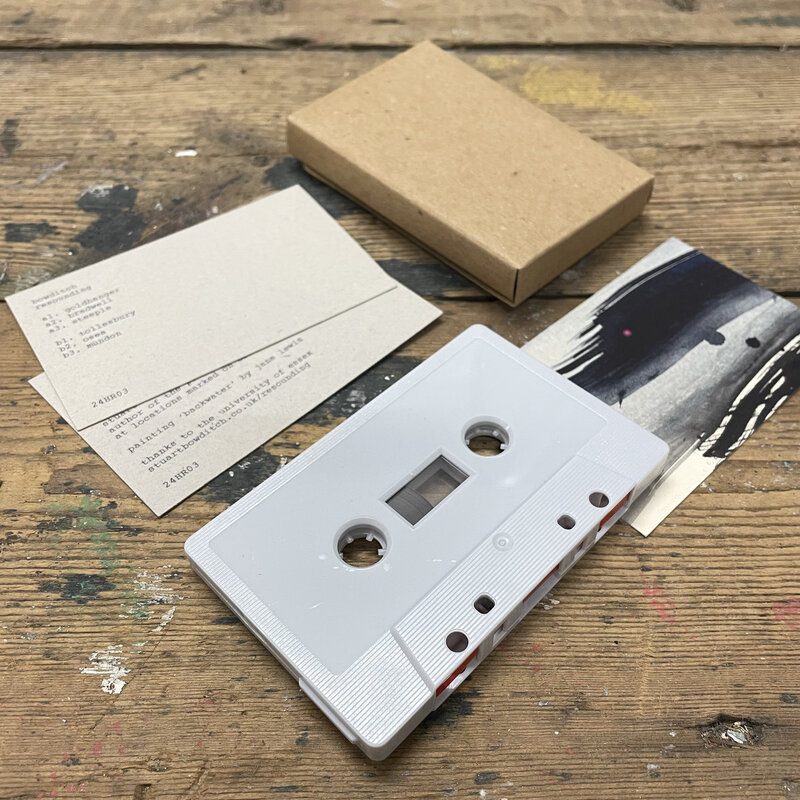
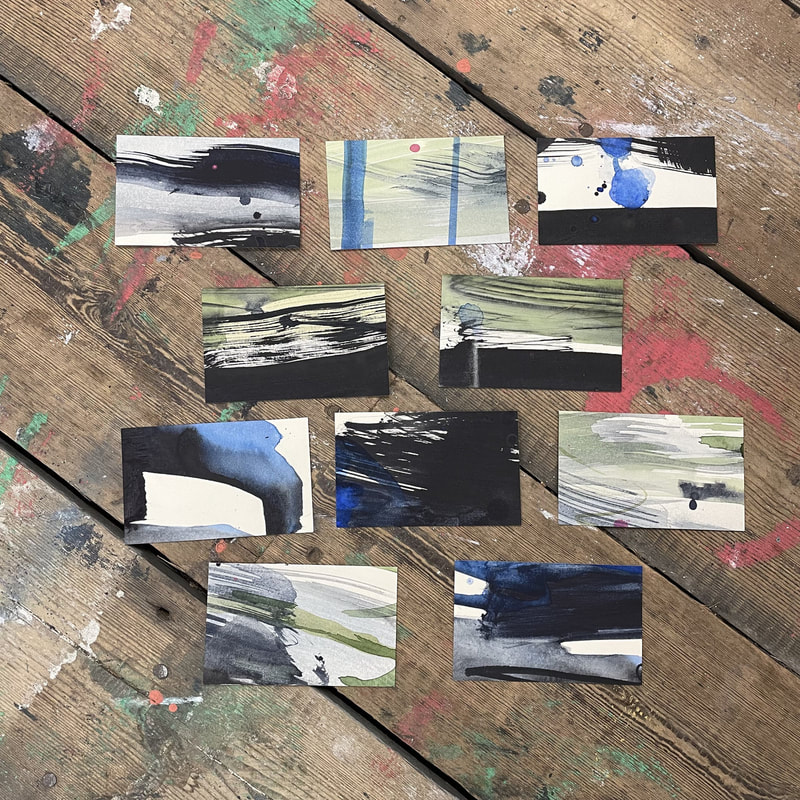

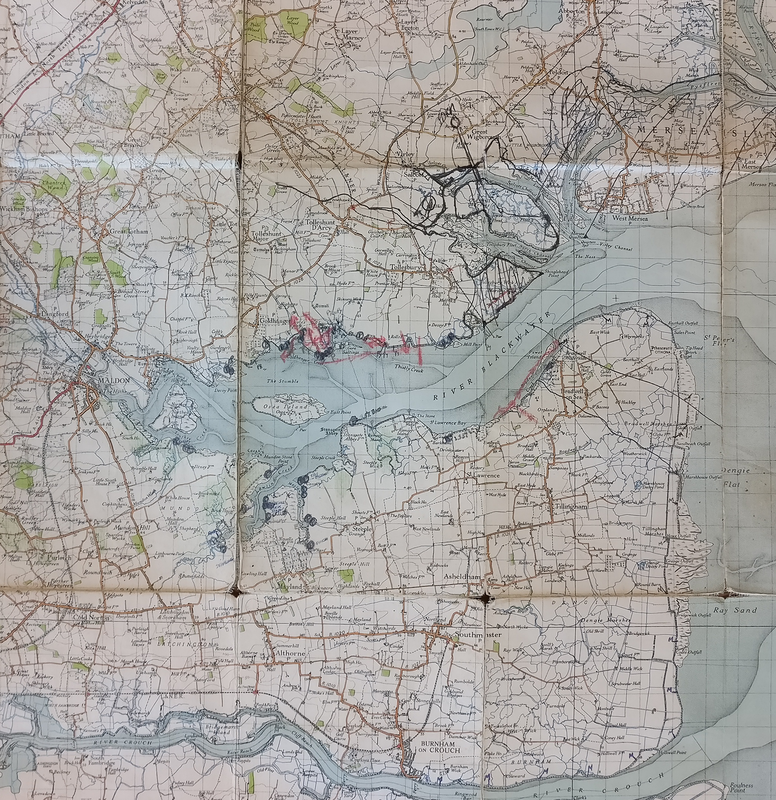


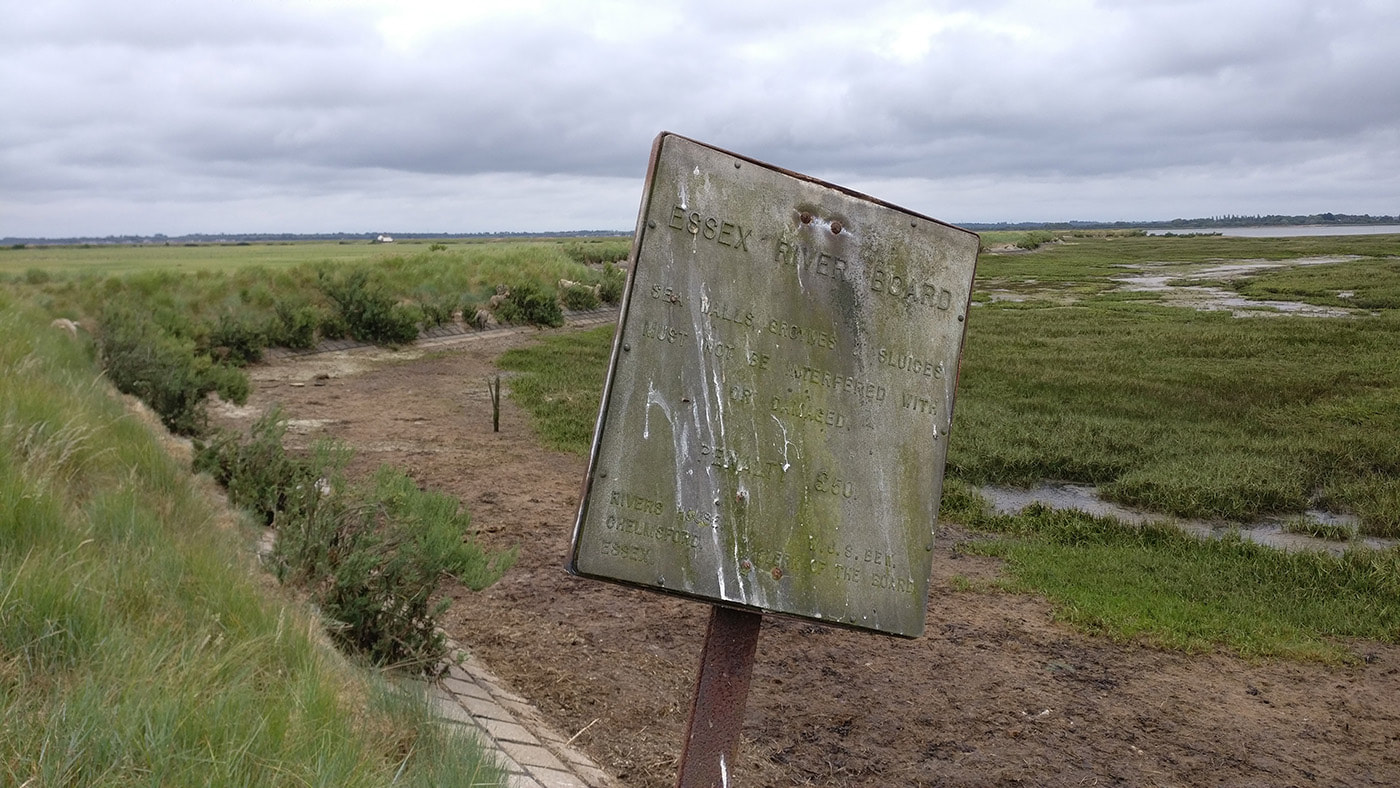







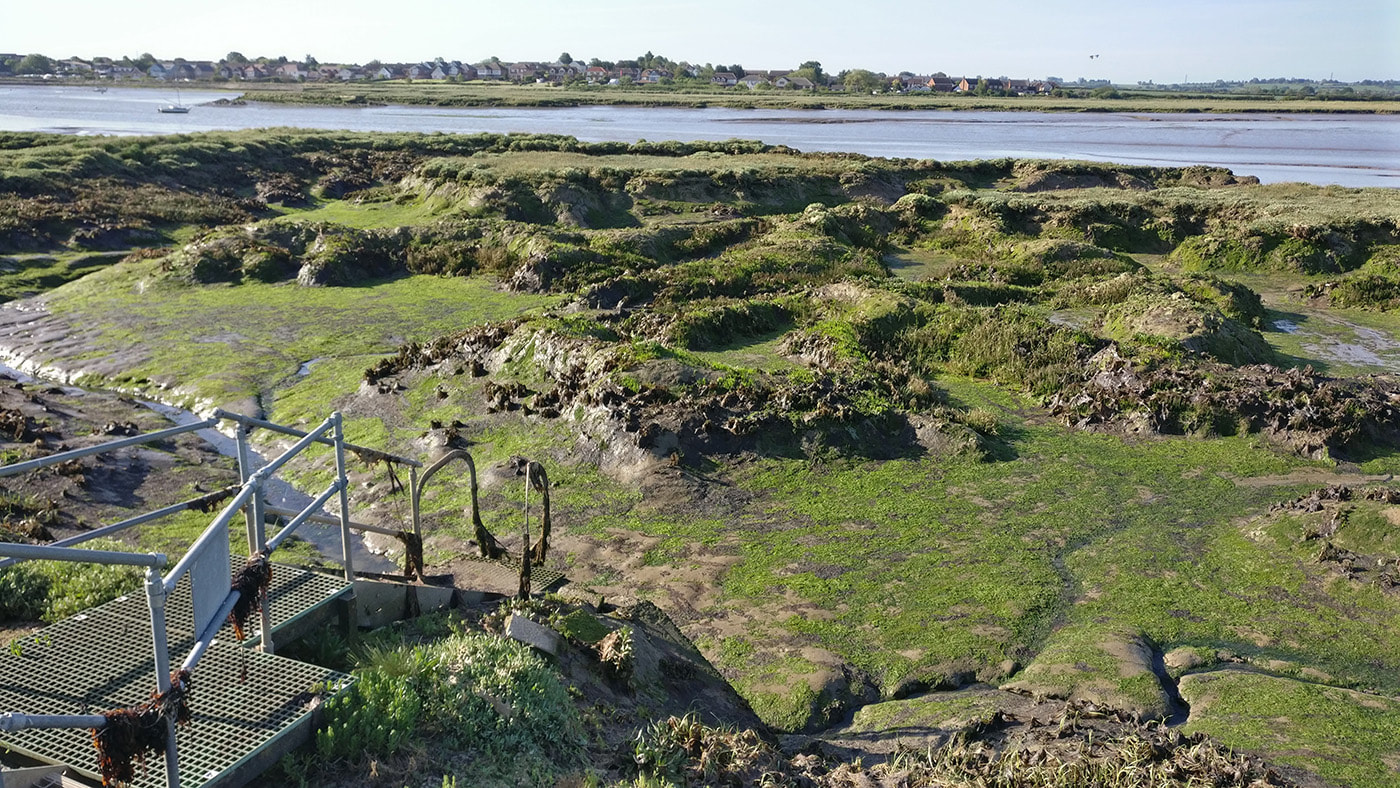

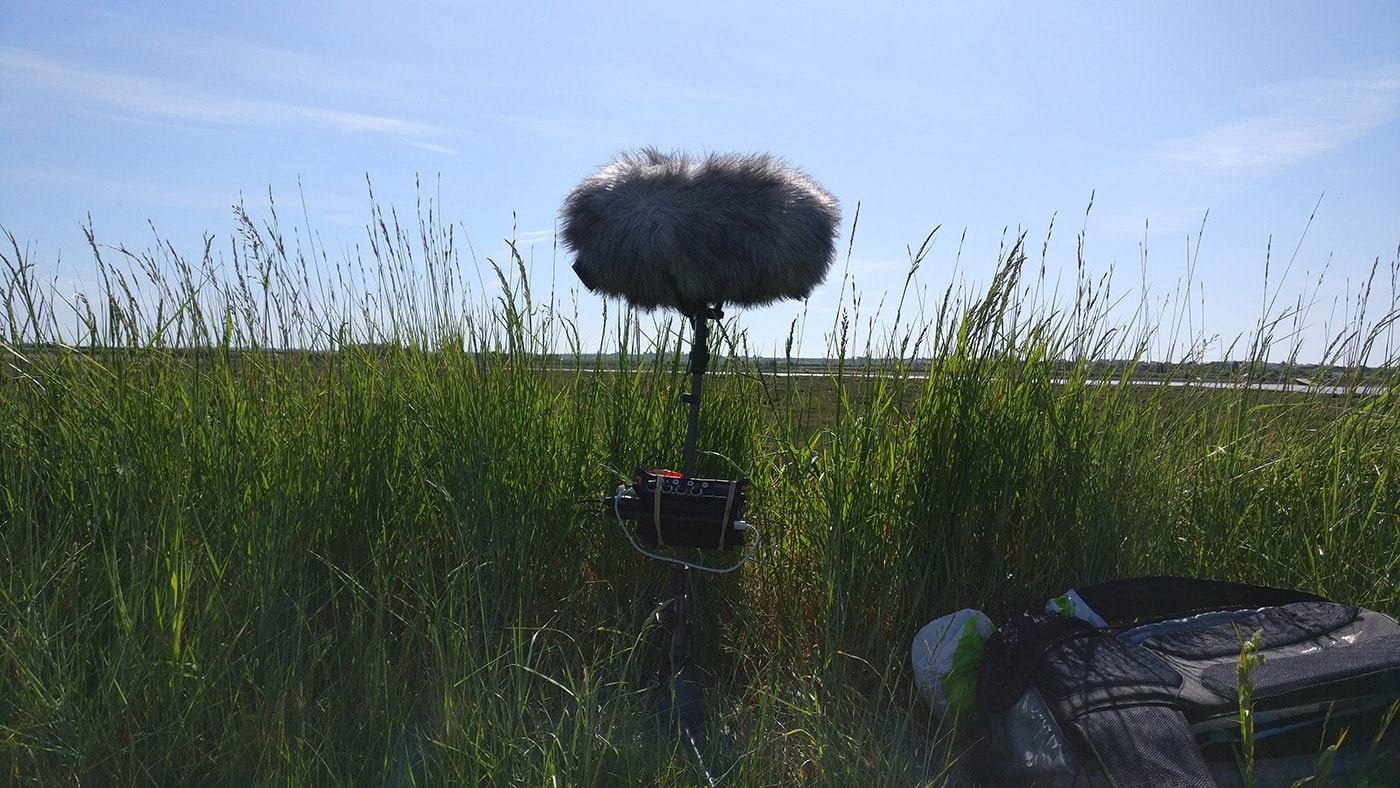
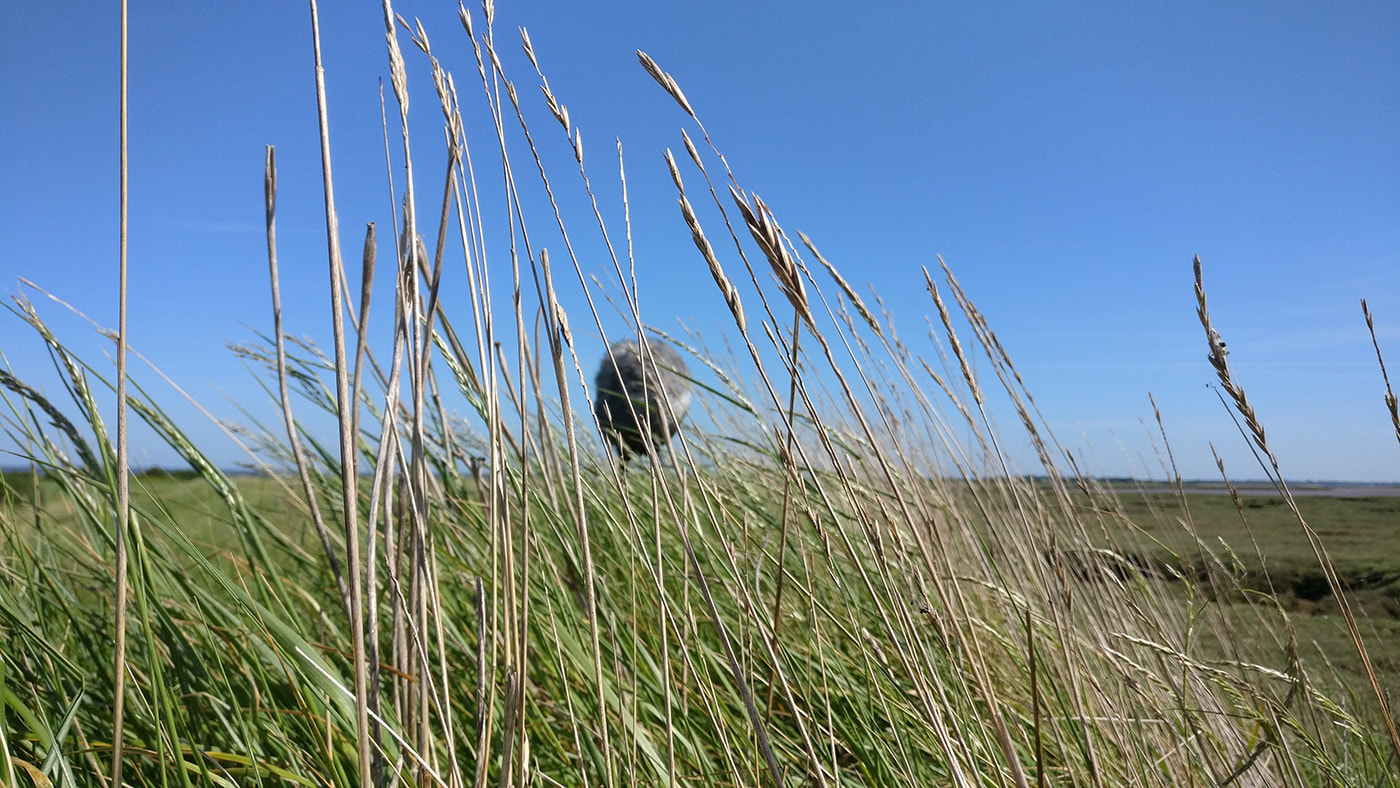




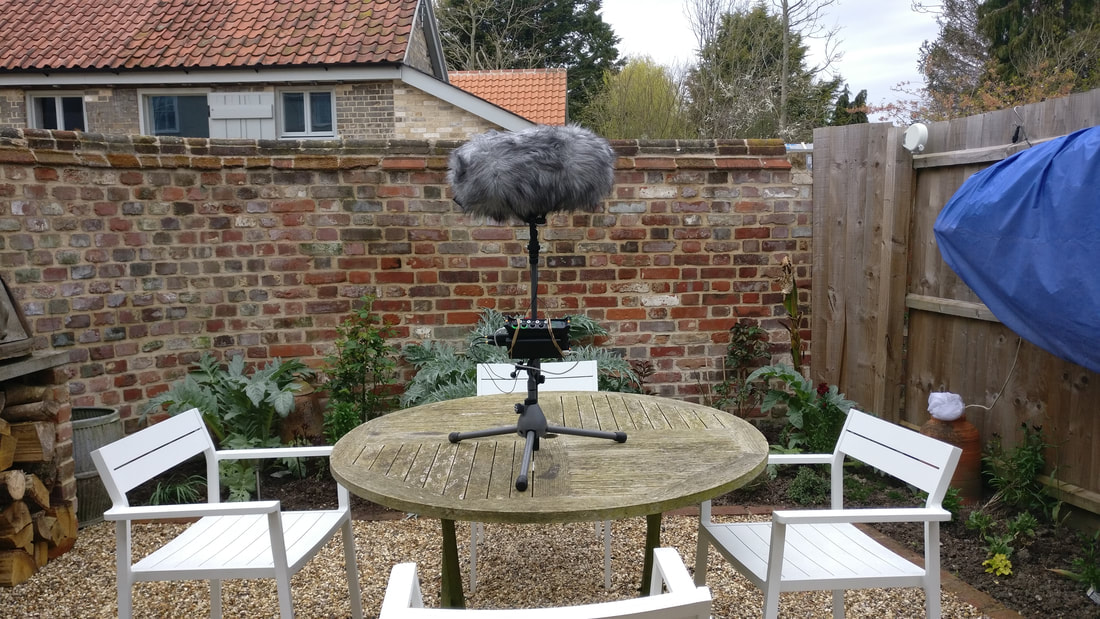
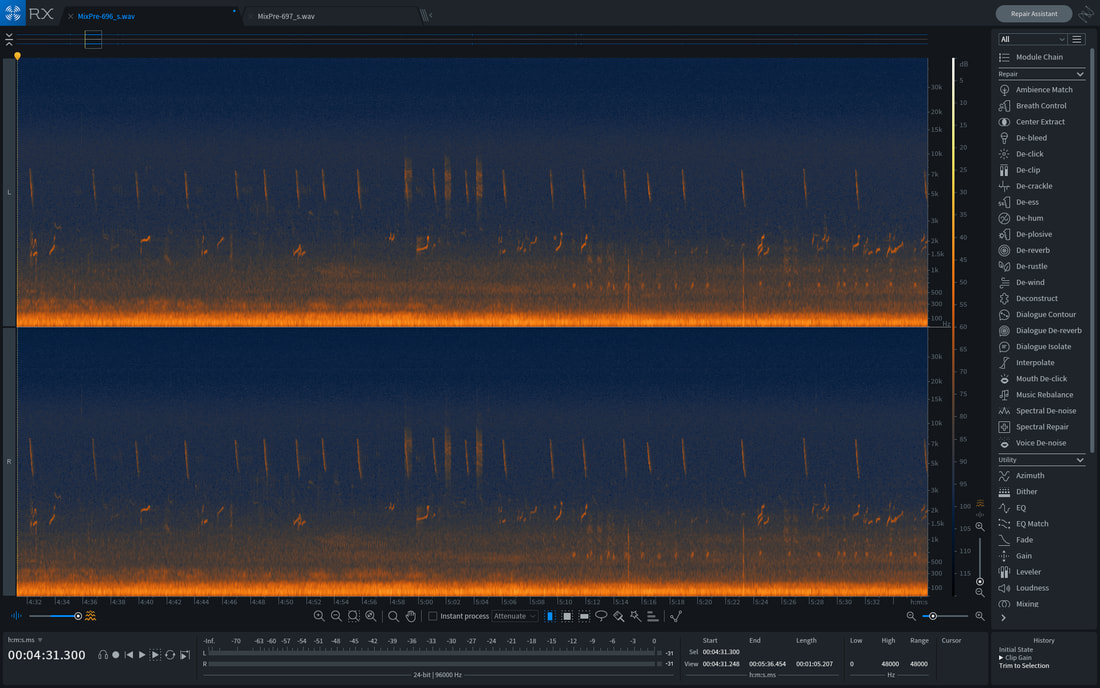
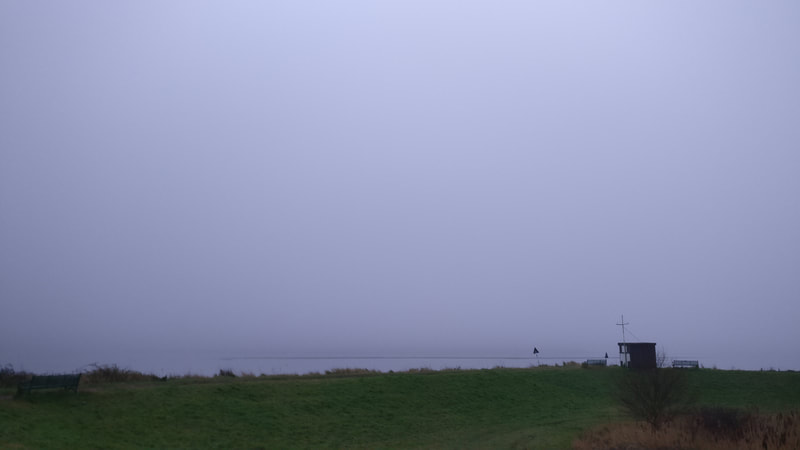


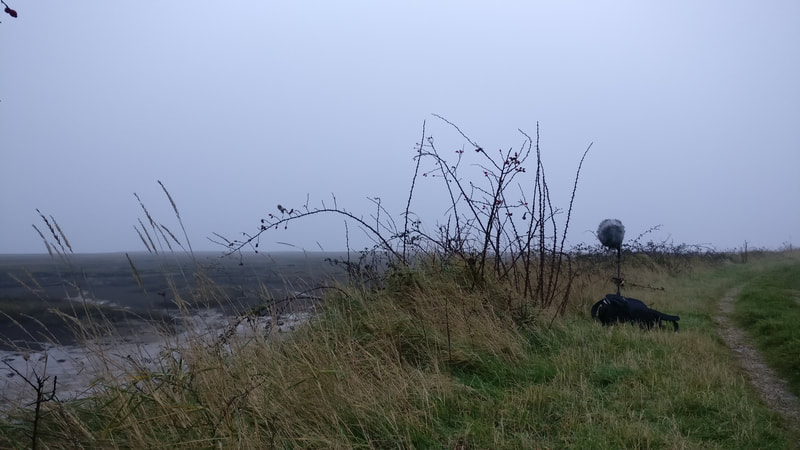



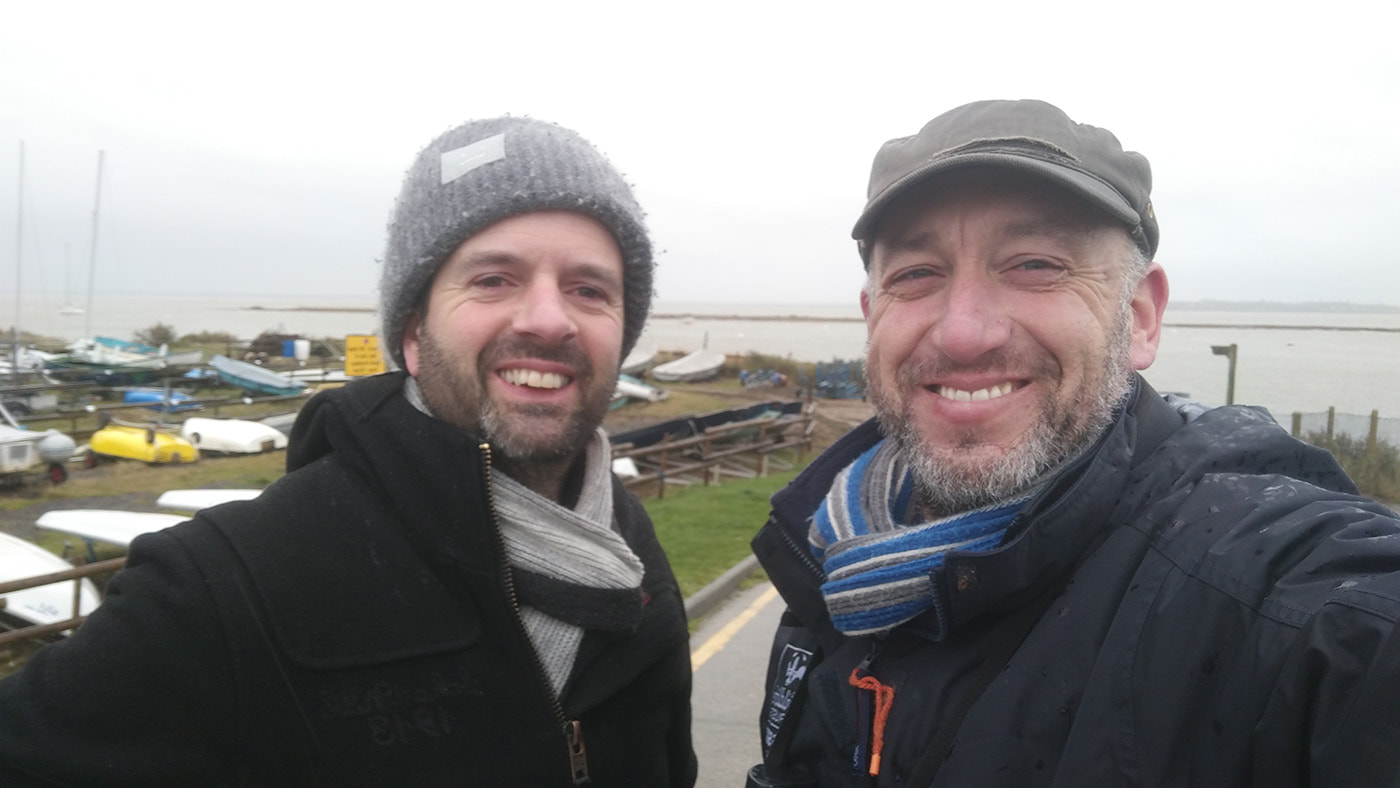
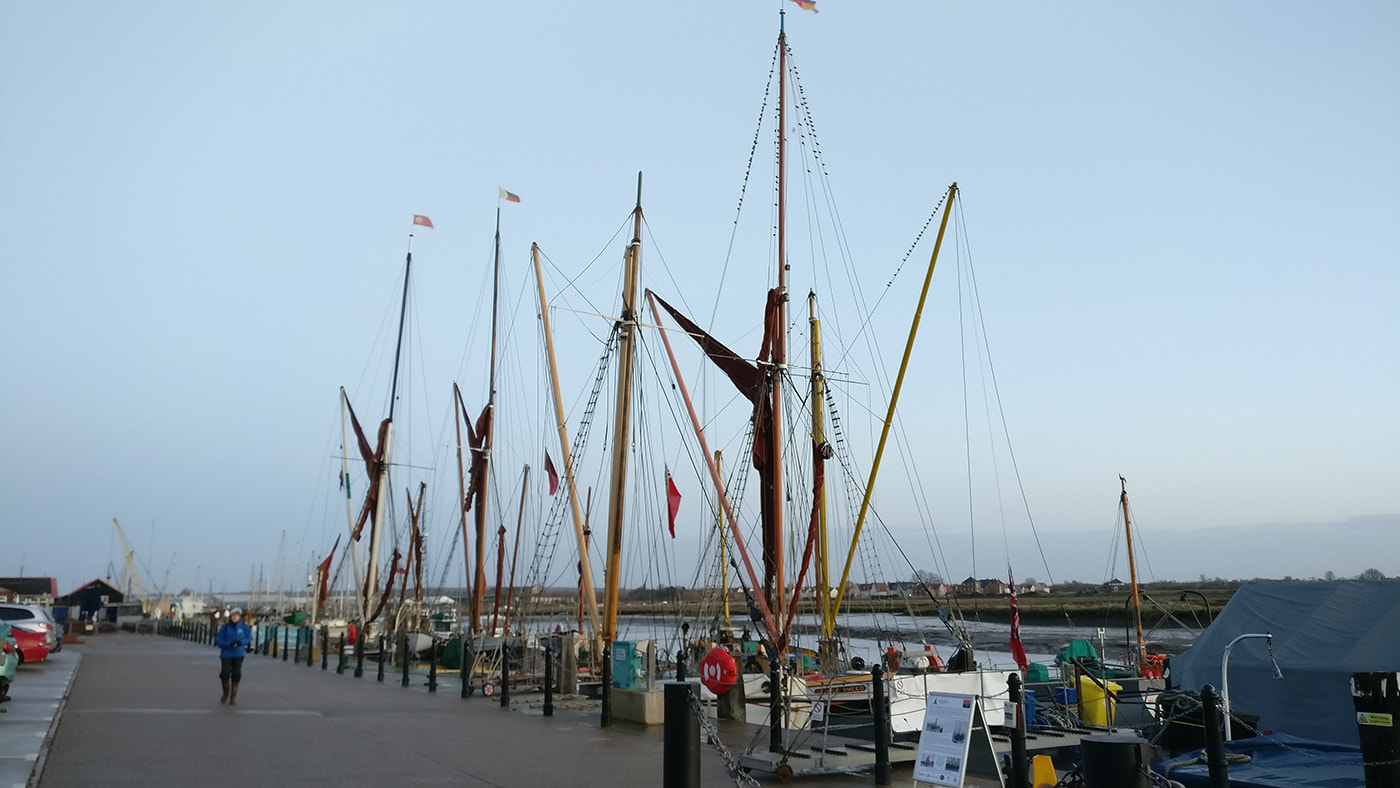

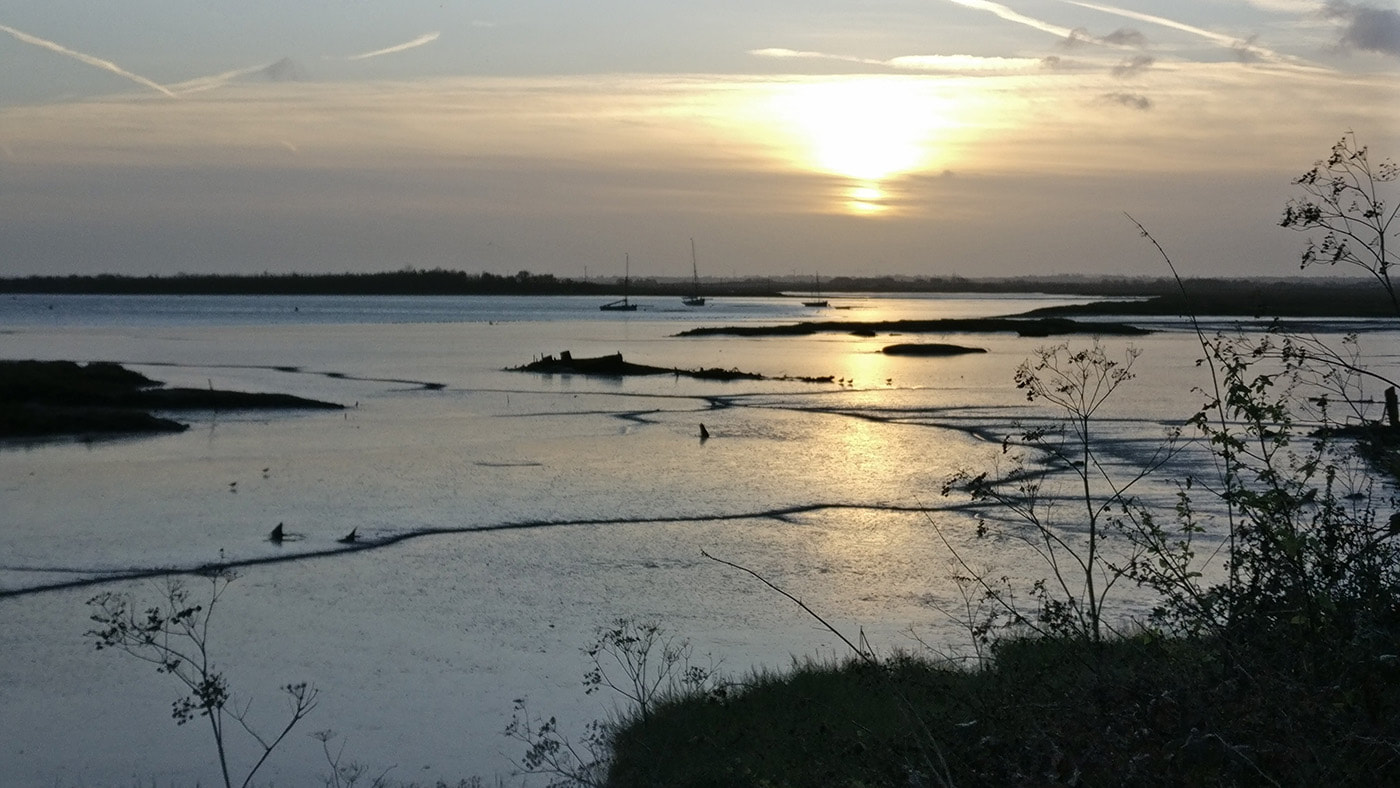







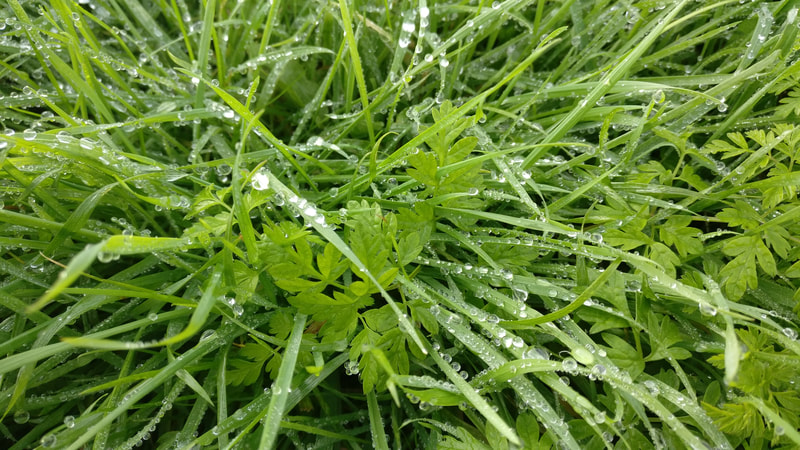




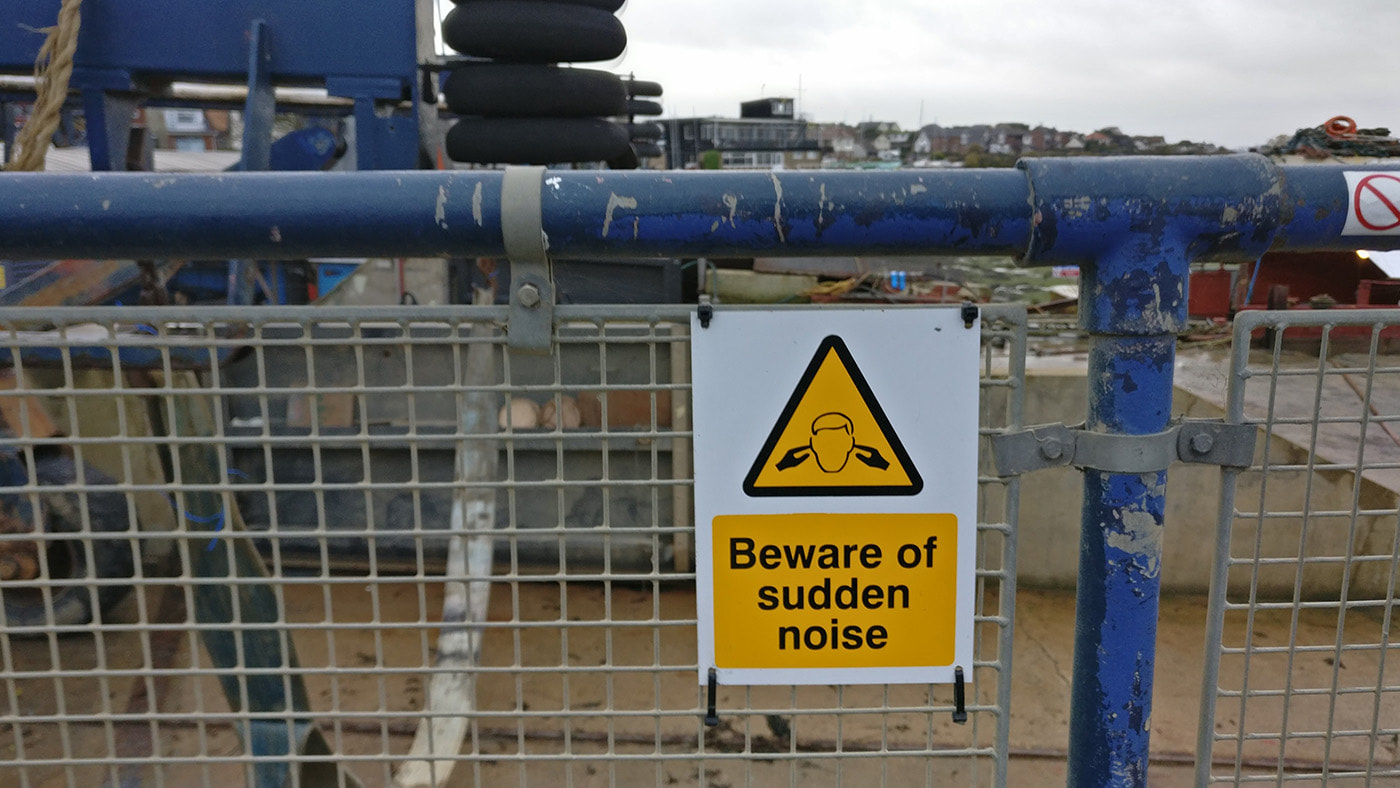
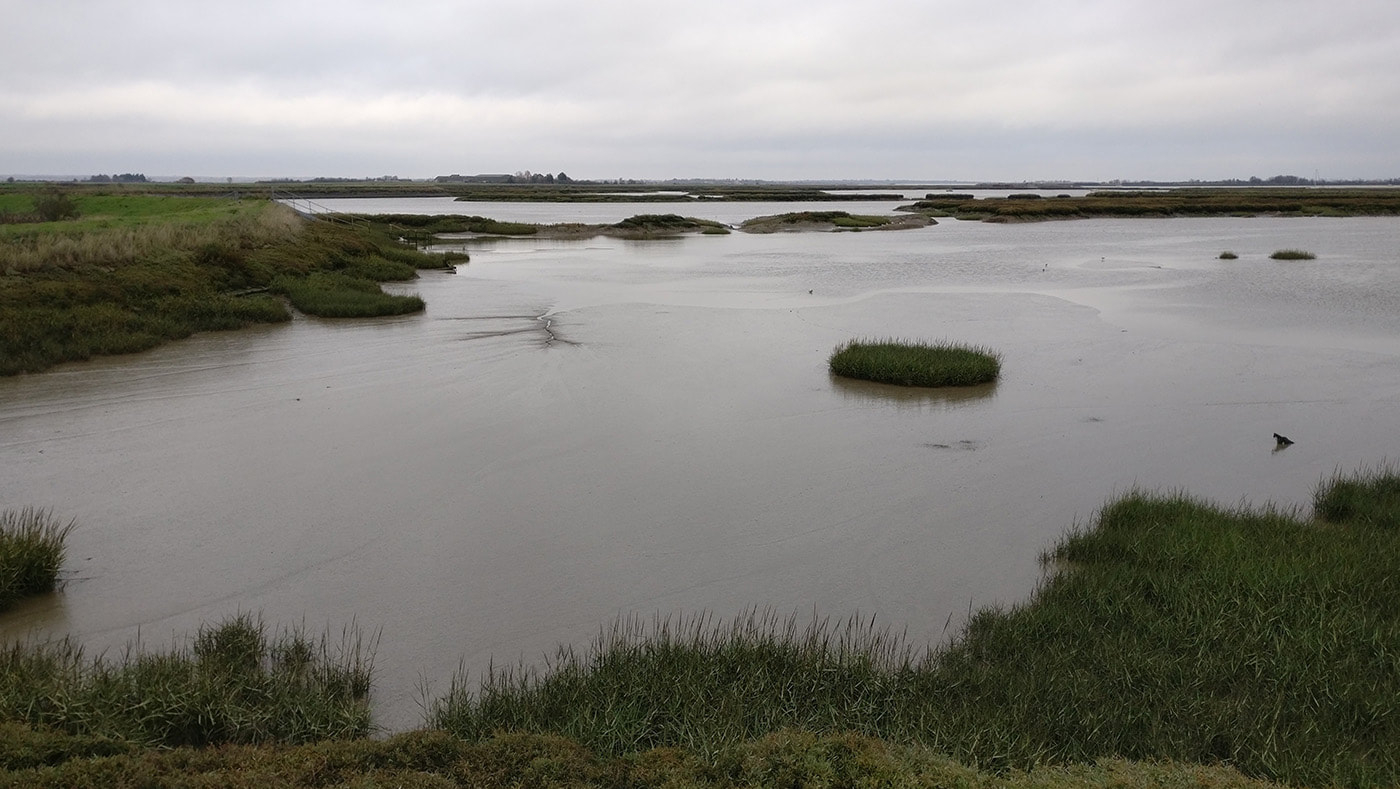
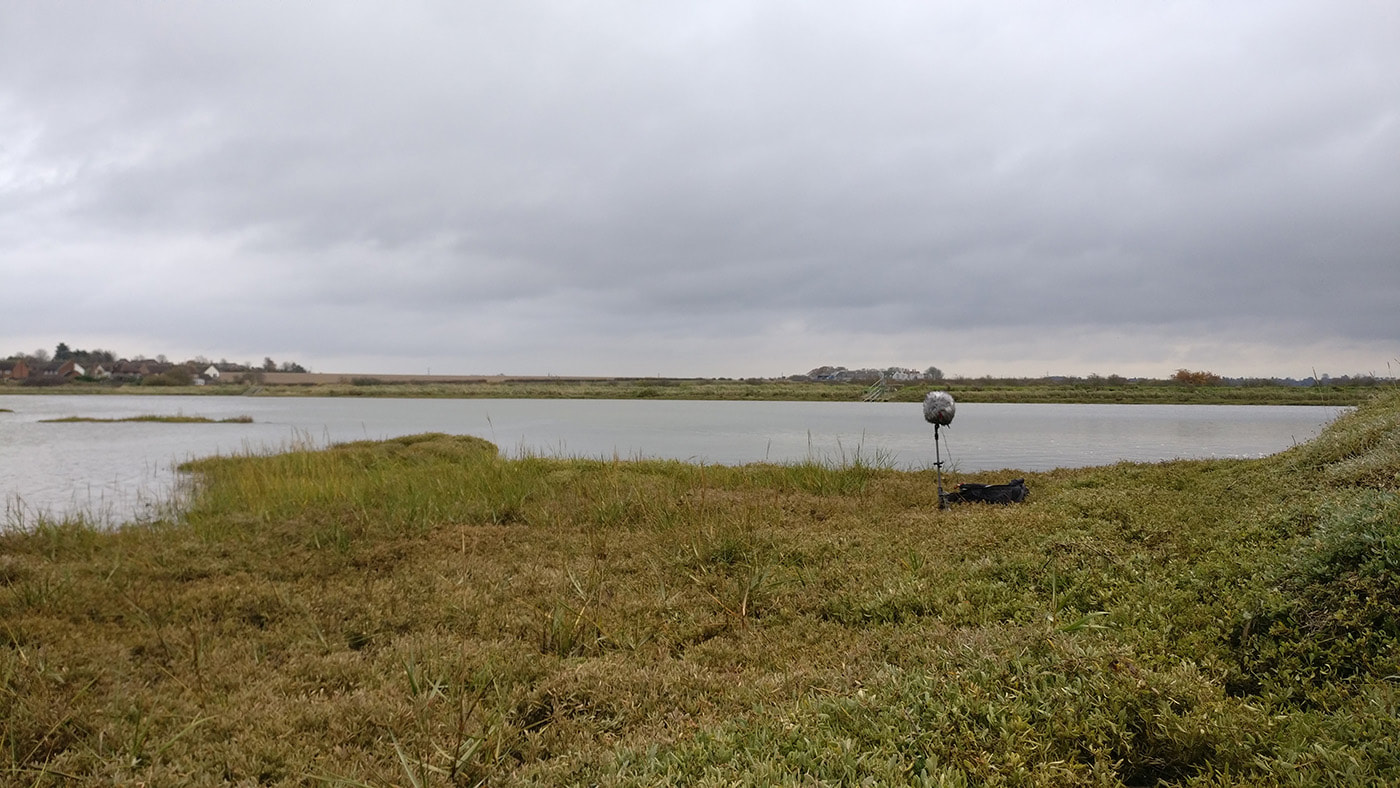
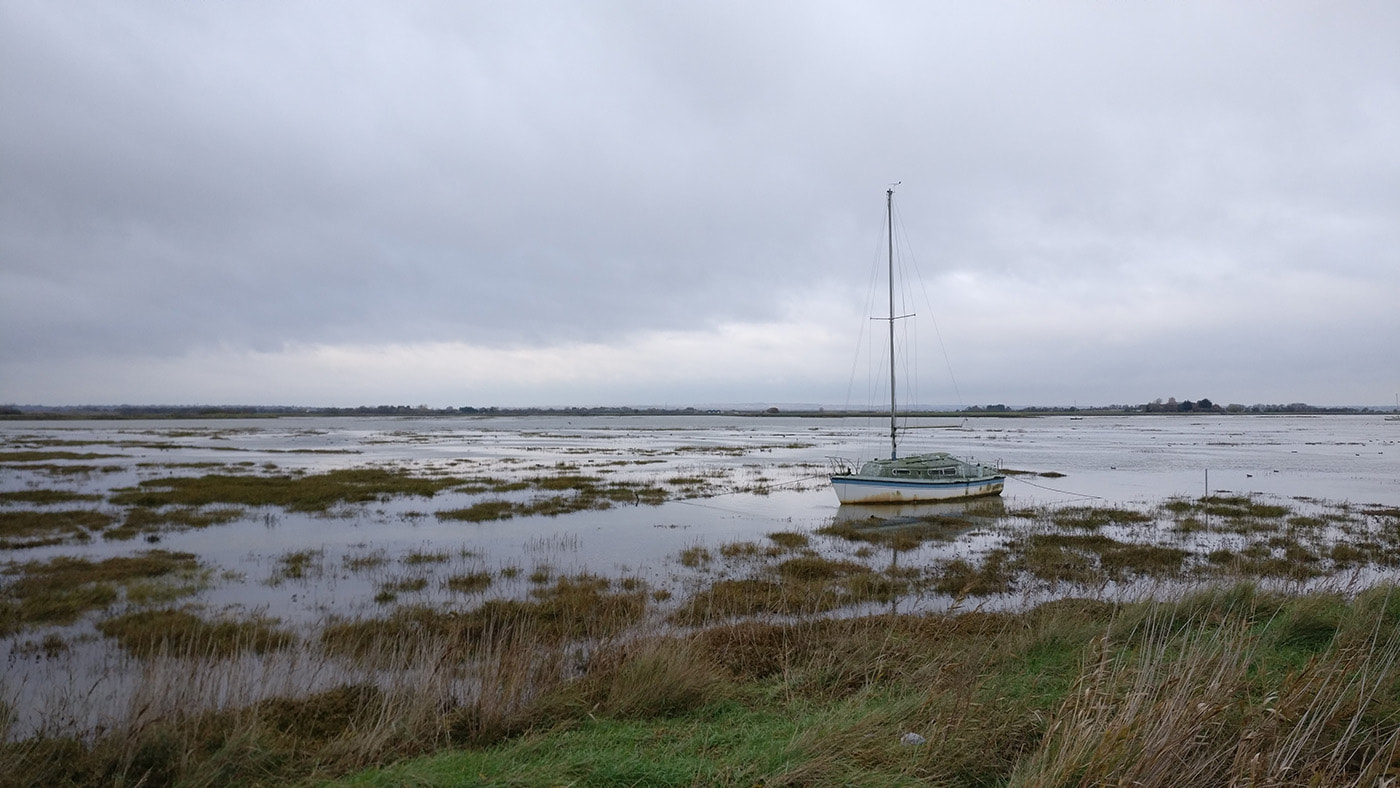

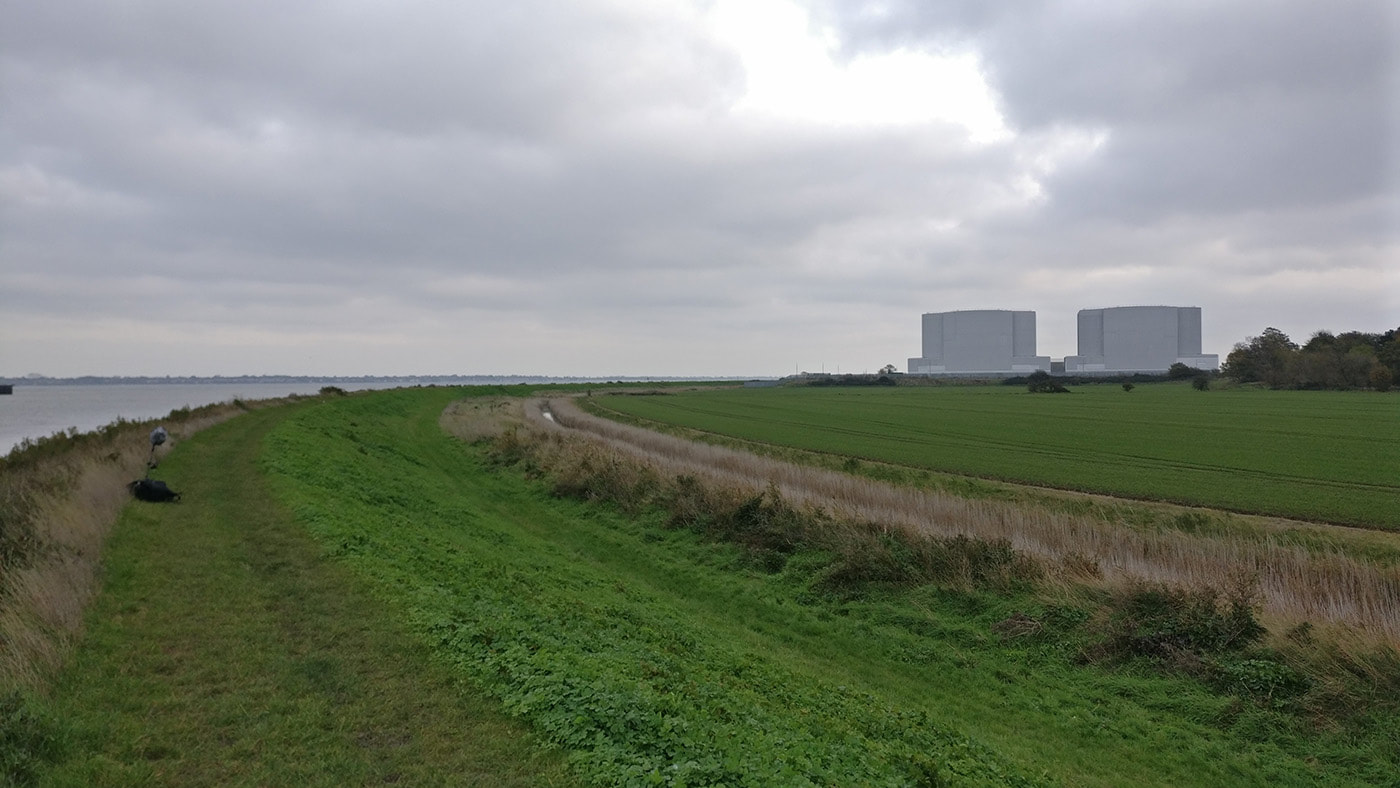








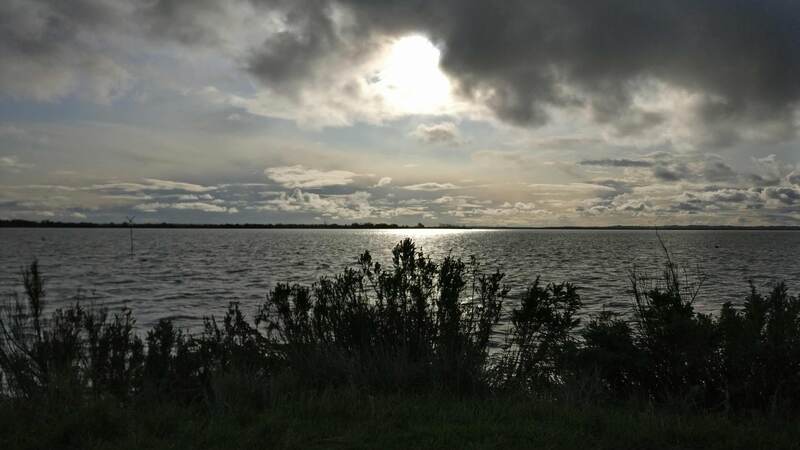



 RSS Feed
RSS Feed
